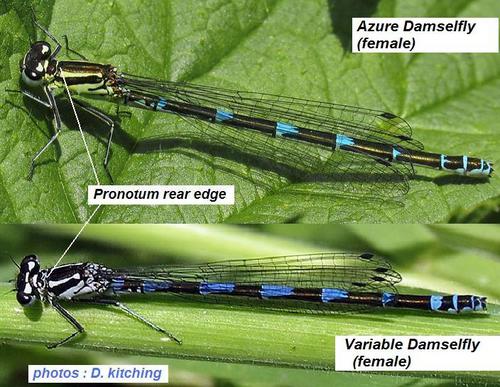Worcestershire dragonflies in 2010
Mike Averill
2010 started with very cold weather in January and February and so the first dragonfly emergences were somewhat later than last year. The monthly temperatures were also not very high with no heat wave weather this year. Much of the year was also dry in Worcestershire with only June and August reaching above average rainfall. The long run of dry months produced drought conditions in many regions and locally Hartlebury Bog went dry as early as mid July. In the report about the Bog in the Worcestershire Record No 25, it was explained how easily the area goes dry in low rainfall years and sadly this was case this year as it is the first time for four years that the bog has gone completely dry.
Dragonfly wise, the Beautiful Demoiselle Calopteryx virgo had another good year and was recorded outside its usual haunts. It was also a good year for the river Clubtail Gomphus vulgatissimus as well with the highest emergences for ten years. Another river species, the Scarce Chaser Libellula fulva was once again seen outside its usual core area of the Avon below Pershore. This time it was seen at Upton Warren and Hurcott Pool, Kidderminster. The last record is interesting because although it is totally outside its range the male was present for two weeks and at the end it showed the rubbing signs caused during copulation. As no other individual L. fulva was seen at Hurcott it begs the question where was this pairing taking place and why was it at a still water situation. The whole issue of dragonflies being present, without giving much indication, occurred again at Kidderminster where an ordinary garden pond produced the emergence of nine Common Hawkers Aeshna juncea despite no sign of this heathland dragonfly having been seen there in the previous seven years.
Darter dragonflies are often the source of migrant records if the weather favours continental influxes, but this year there were no Red-veined Darters Sympetrum fonscolombei.
The Small red-eyed Damselfly Erythromma viridulum is often mentioned in small numbers in these annual reports there were three for instance at Ipsley Alders in early August, but this year there was a surprise as hundreds were seen at Croome Landscape Park near Kempsey. They were first seen on the 8th of August and they were visible for about six weeks. Showing signs of breeding they were to be seen sitting on the water milfoil and algae along with the occasional Red Eyed damselfly Erythromma najas. Next season is eagerly awaited in order to search for the possible successful emergences and exuviae.
Finally there is the possibility of a retrospective record has being confirmed as the 29th species in Worcestershire – the Variable Damselfly Coenagrion pulchellum. In 2008, Des Jennings had taken a photo of a female damselfly that looked interesting, but at the time it was thought to be not sufficient to confirm its identity. At the moment the photo is being considered by the Dragonfly Rarities Committee so we await the outcome with interest. The reason the identification is so difficult is that there is a very similar blue form of the Azure Damselfly Coenagrion puella to the female Variable Damselfly Coenagrion pulchellum. The only reliable feature is the more deeply lobed rear margin of the pronotum on the upper surface of the prothorax on the Variable Damselfly, just behind the eyes.
